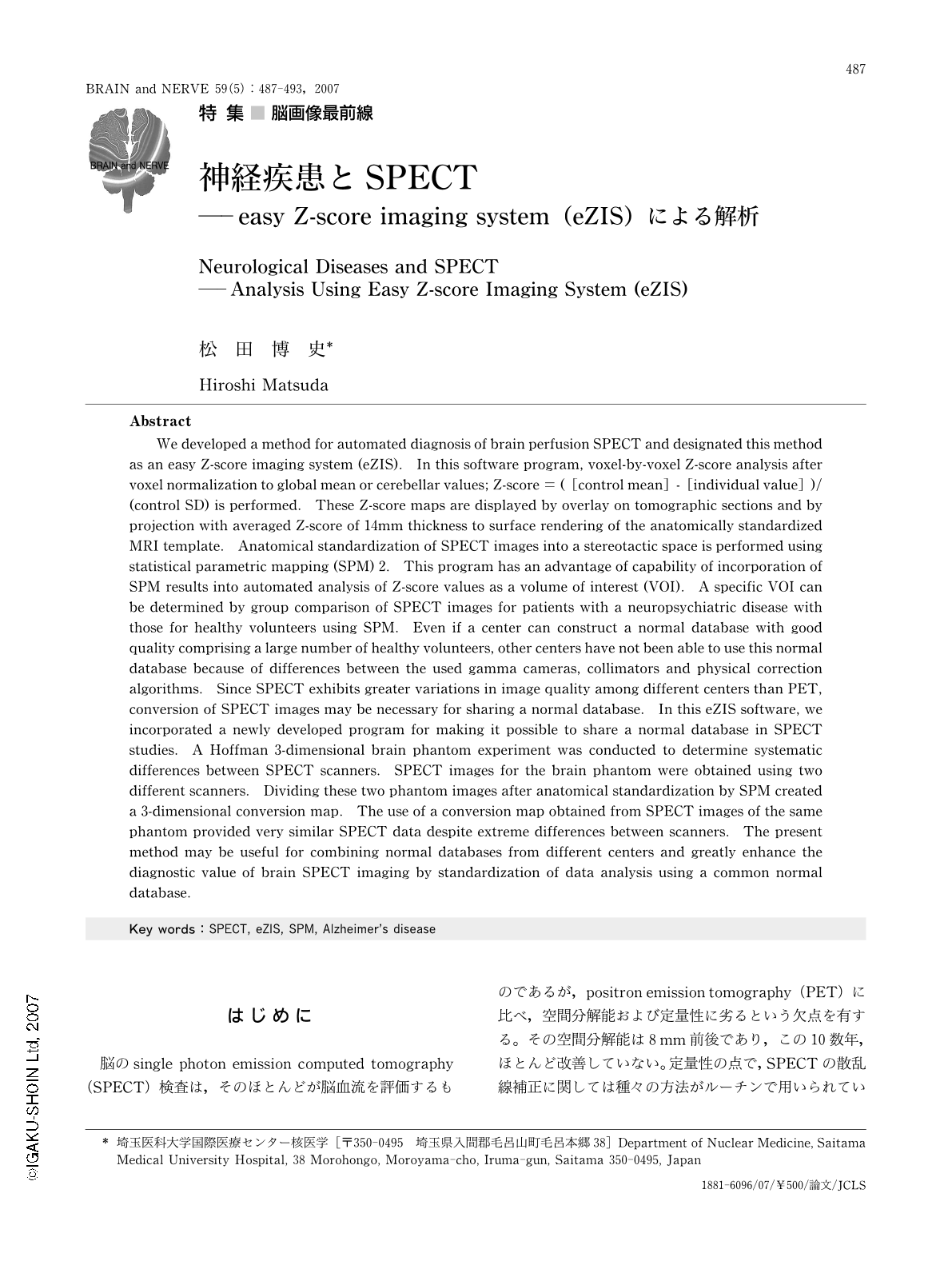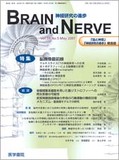Japanese
English
- 有料閲覧
- Abstract 文献概要
- 1ページ目 Look Inside
- 参考文献 Reference
はじめに
脳のsingle photon emission computed tomography(SPECT)検査は,そのほとんどが脳血流を評価するものであるが,positron emission tomography(PET)に比べ,空間分解能および定量性に劣るという欠点を有する。その空間分解能は8mm前後であり,この10数年,ほとんど改善していない。定量性の点で,SPECTの散乱線補正に関しては種々の方法がルーチンで用いられている。
一方,吸収補正に関しては,SPECT装置と一体となったCT 装置を用いて吸収補正を行う方法が今後普及する可能性があるが,通常は脳を一様の楕円吸収体とみなすChang法が用いられており,transmission線源を用いるPETに比べ不正確な吸収補正となっている。しかし,脳血流SPECTは種々の精神・神経疾患に保険適用されており,PET装置に比較すると普及度は極めて高いことから,日常臨床に広く用いられている。
脳血流低下が顕著な脳血管障害例では,SPECT像の視覚評価のみで十分なことが多いが,精神疾患や初期の変性疾患では,血流異常が軽微なため視覚評価が困難なことが多い。この視覚評価を補うものとして最近多用されている手法が,画像統計解析法である。本稿では,われわれが開発した画像統計解析法であるeasy Z-score imagingsystem(eZIS)の脳血流SPECTへの応用について述べる。
Abstract
We developed a method for automated diagnosis of brain perfusion SPECT and designated this method as an easy Z-score imaging system (eZIS). In this software program, voxel-by-voxel Z-score analysis after voxel normalization to global mean or cerebellar values;Z-score= ([control mean]-[individual value])/ (control SD) is performed. These Z-score maps are displayed by overlay on tomographic sections and by projection with averaged Z-score of 14mm thickness to surface rendering of the anatomically standardized MRI template. Anatomical standardization of SPECT images into a stereotactic space is performed using statistical parametric mapping (SPM)2. This program has an advantage of capability of incorporation of SPM results into automated analysis of Z-score values as a volume of interest (VOI). A specific VOI can be determined by group comparison of SPECT images for patients with a neuropsychiatric disease with those for healthy volunteers using SPM. Even if a center can construct a normal database with good quality comprising a large number of healthy volunteers,other centers have not been able to use this normal database because of differences between the used gamma cameras, collimators and physical correction algorithms. Since SPECT exhibits greater variations in image quality among different centers than PET, conversion of SPECT images may be necessary for sharing a normal database. In this eZIS software, we incorporated a newly developed program for making it possible to share a normal database in SPECT studies. A Hoffman 3-dimensional brain phantom experiment was conducted to determine systematic differences between SPECT scanners. SPECT images for the brain phantom were obtained using two different scanners. Dividing these two phantom images after anatomical standardization by SPM created a 3-dimensional conversion map. The use of a conversion map obtained from SPECT images of the same phantom provided very similar SPECT data despite extreme differences between scanners. The present method may be useful for combining normal databases from different centers and greatly enhance the diagnostic value of brain SPECT imaging by standardization of data analysis using a common normal database.

Copyright © 2007, Igaku-Shoin Ltd. All rights reserved.


